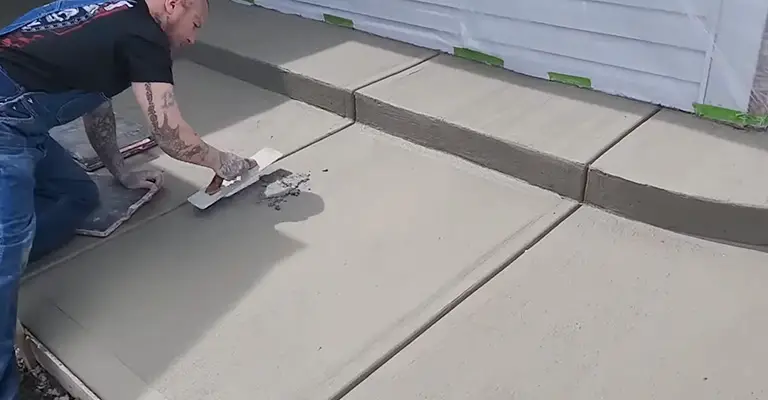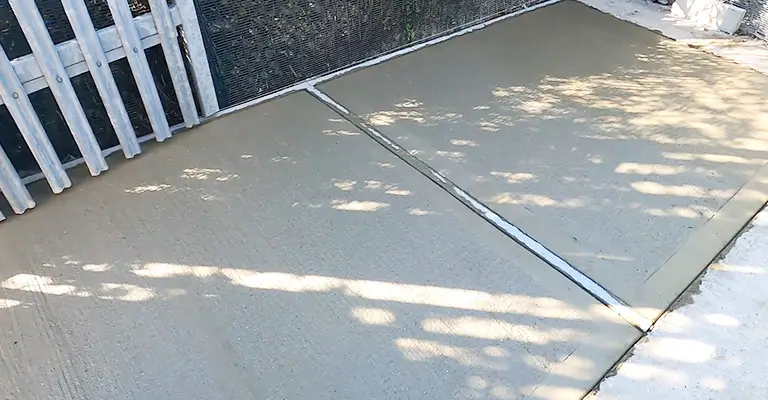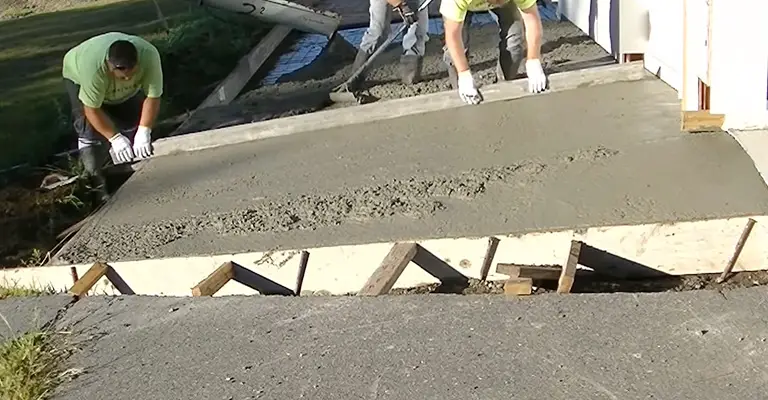Ever wondered about putting concrete over those spaces on your property where utility companies have their equipment?
You know, those spots where they need to access things like power lines and pipes? Turns out, it’s not as simple as it might seem.
It is usually possible to build on easements, whether they are property easements or utility easements. It is better not to build on that easement if peace of mind is your primary concern.
It’s pretty much up to you what you want to do. We can only hope and pray that neither the city nor any of the utility companies will ever have to dig in the easement.
Whatever you put down in the easement will be ripped up (legally). It may be necessary for the dominant estate to access the easement.
Depending on the situation, anything from fences, shrubs, to children’s playsets might have to be removed.
You should always check with your local municipality before building on a property easement to ensure you do not encroach on any access points or property borders.
If you don’t interfere unreasonably with the utility company’s use of the easement, you can do whatever you want to your utility easement. Concrete can be poured as long as you do not obstruct it too much.
Continue reading to learn exactly what you can and cannot do on the utility easement if you want to avoid breaking any rules.
Pouring Concrete Over A Utility Easement

Pouring concrete over a utility easement can potentially create legal and practical issues.
A utility easement is a legal right that grants utility companies or other entities the right to access and maintain their utility lines or infrastructure on a specific portion of your property.
This means that even though you own the land, you cannot obstruct or prevent the utility company’s access to their equipment. Here are some considerations:
Legal Issues
Placing concrete over an easement could be a violation of the terms of the easement agreement or local regulations.
This could result in legal action against you, potentially requiring you to remove the concrete at your own expense and compensate the utility company for any damage or disruption caused.
Utility Access
Easements are designed to provide utility companies with access to their equipment for maintenance, repairs, and upgrades.
Pouring concrete over an easement could hinder their ability to access their equipment, leading to functional issues and potentially increased costs for them to work around the obstruction.
Future Property Use
Placing concrete over an easement could limit your future use of the property. If you ever need to dig up the area for repairs or improvements, you may face additional challenges and costs due to the presence of concrete.
Liability
If the utility company’s equipment is damaged due to your actions, you could be held liable for the costs of repair and any resulting losses.
Local Regulations
Local zoning and land use regulations might have specific requirements or restrictions related to utility easements and their usage. It’s important to research and understand these regulations before taking any action.
Communication
If you are considering any construction or landscaping work that could impact utility easements on your property, it’s a good idea to communicate with the relevant utility companies and possibly consult with legal professionals to ensure you are in compliance with all legal and practical considerations.
What a Property Easement Is
Despite still owning the land and technically having the right to build on it, easements allow individuals or entities to use portions of your property (to build on or for physical access).
A dominant estate is the entity or person who can do this; you are a servient estate.
There are many types of property easements. Utility easements allow the installation of sewer and gas lines. In driveway easements, a short road or driveway provides access to your property.
Public sidewalk easements allow pedestrians to walk in front of your property, provided they remain on the sidewalk.
You still own the property, yet the public, government agencies, and utility companies have access to it.
People often seem to live in a hazy world where nothing is really theirs. How can someone claim your property in perpetuity if you own your house and land in full?
The core issue lies there. Your property is yours. Nevertheless, you are forced to give up some of your land in service of a greater public good, just as you would with eminent domain actions.
How to Find out If You Have an Easement

When you buy a house, your title documents should indicate that the property contains an easement.
To locate your title documents, go to the tax assessor section of your county’s website. There is a good chance you can find documents related to your property, including easements.
7 Property Easements That May Affect You
Most easements do not affect residential property owners, but there are some that do. Homeowners who want to build or remodel may only be affected by certain easements.
Utility Easements (Above Ground)
There are also power lines or telephone lines that run over private property. In order to maintain the lines, a utility may need access to your property, so you could be affected by an above-ground easement.
Utility Easements (Below Ground)
Private property frequently has storm drains, sanitary sewer mains, or natural gas lines running through it.
You may be affected by a utility easement if the dominant estate (or utility) needs access to an area under a fence or tiny house you built.
View Easements
As communities become more aware of the value of sightlines, view easements are becoming more common.
By creating an easement, your neighbor is entitled to enjoy the view of the coastline without your building up, planting trees, or adding other obstructions to it.
There should be an attachment to your house’s warranty deed that outlines the easement’s conditions. Your warranty deed and attachments will be included in the documents you receive from the title company.
Conservation Easements
Greenbelts and parks may be included in conservation easements.
Deadend Or Beach Easements
A dead-end or beach easement is usually found along the side border of a property, allowing the public to access an area beyond your property, like a beach, park, or shortcut.
Driveway Easements
Property owners with driveway easements typically divide deep lots into two pieces, one in front, one in back.
On one lot, you build your own house and sell the other lot. A house is built on the other lot by the buyer. A driveway easement is necessary for the resident of the back lot to gain access.
Sidewalk Easements
Thousands of homeowners have sidewalk easements on their properties, one of the most common types of easements. You may still have a sidewalk easement in place even if there is no sidewalk in place physically.
In spite of not building the sidewalk, you may be required to maintain it by clearing snow, ice, and other obstructions.
Can You Plant Shrubs and Grass on Easements?
There is no restriction on planting shrubs, shrubberies, or grass on easements. It is not advisable to plant trees and other major vegetation on easements.
An example of this would be to plant an above-ground garden on an easement that covers the manhole to the sewer main.
This manhole is regularly accessed by workers who work around the plantings. Only shrubs in key areas are removed.
Can You Install Hot Tubs and Pools on Easements?
Almost any type of pool, including a hot tub, can be installed over an easement. Hot tubs and pools above ground are also subject to removal.
Due to the fact that in-ground pools cannot be removed easily, they can also interfere with easements in the ground.
There are a number of in-ground pools that are deep enough to interfere with municipal sewer mains running through easements.
Generally, in-ground pools are 8 feet deep; sanitary municipal lines are buried 12 feet or deeper. An easement is not the best place for an above-ground hot tub or pool.
Final Words
Concrete can be poured over easements. Different easements have different characteristics, affecting how difficult or complex it may be to concretize over them.
Locating easements on your property can be determined by speaking with your local county, utility company, and neighbors. Concrete over easements on your property should be done with this information in mind.








